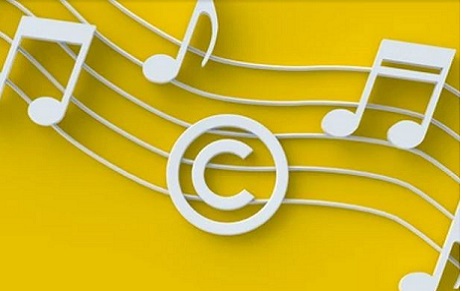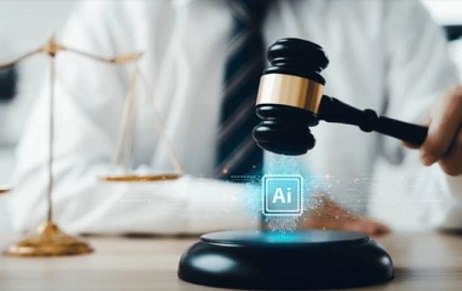Any successful café, restaurant, or retail establishment's environment is greatly influenced by its music. It…
Copyright Licensing and Competition: The Interface between Copyright and Market Competition
INTRODUCTION
The relation between Competition law and IP is dynamic in nature and ever changing so there is growing interest in the relationship between Competition law and Intellectual Property especially because IP protection has expanded globally.
The primary concern from the perspective of competition law is the possible violation of competition due to patent/trademark/copyright. These legal tools grant exclusive power that could be abused by the holders of intellectual property rights (IPRs) to the detriment of innovation and consumer welfare.[1] At the same time, the holders of IP rights can protect themselves by using competition law and can promote more competition and innovation in the market.
COPYRIGHT AND COMPETITION LAW
In today’s contemporary world the competition authorities are investigating the companies that are holding copyrights. Copyright confers a certain level of economic power on the market, which may be abused if a dominant firm were to tie up, refuse to license, foreclose competitors, or use excessive royalties. The most famous cases includes Microsoft, google, intel etc. in which all these copyright holders are found to be violating competition by abusing their market position in the market.[2]
In the case of Microsoft[3] in 2004, European Commission held that the company has abused their dominant position in the market and has copyright in computer program. The Microsoft refused to give information, on interoperability that would have allowed rivals to create rival workgroup server software that was Windows platform compatible, to a rival company.[4] After investigation the EC has fined Microsoft €497 million for abusing its dominant position for refusal to deal and tying.
In 2000, a complaint was filed by Advanced Micro Devices (AMD) against Intel[5] for abusing its dominant position in the[6] market. EC found that Intel infringed Article 102 of TFEU[7] by granting loyalty rebates.
Finally, in Google case[8] EC penalizes Google for abusing its dominant position as it favoring its own content in its search results.[9]

COPYRIGHT AND MARKET
Defining the market in copyright-related cases can be extremely challenging. This is due to three specific reasons:
First, extremely subjective consumer tastes are generally unreliable and poor indicators for determining demand-side substitutability when it comes to cultural content.[10]
Second, it is difficult to identify which technological distribution networks can be regarded as substitutable, particularly in media markets due to the quick speed at which technology is developing.
Third, in many matters involving copyright, enforcers are required to take into account the concept of “two-sided markets.”[11] This feature is especially important in circumstances of competition involving intermediaries, notably in media markets where the public receives services at no cost.
ANTI-COMPETITIVE AGREEMENT AND IPR
Section 3 of the Competition Act, 2002 deals with anti-competitive agreements that significantly harm the market. But Clause 5 of this section talks about section 3 that does not apply to agreement that are created in order to preserve the rights holders Intellectual Property Rights.
The specialized tribunal to deal with competition law cases is Competition Commission of India (CCI). CCI plays a crucial role in maintaining competition and against anti-competitive behavior. This quasi-judicial body has rendered decisions on several precedent-setting cases pertaining to the connection between copyright and competition law.
United Producer/Distributors Forum v. Multiplex Owners[12]
Bollywood film distributors and producers fought with multiplex owners in 2009 about revenue sharing, which sparked allegations of unfair cooperation and cartel-like conduct. Reducing the number of films available at multiplexes, producers and distributors claimed their activities were justified by the Indian Copyright Act, 1957. Following an investigation and the discovery of evidence of cartel activity, the CCI declared that section 3 of the Competition Act had been broken. The CCI came to the conclusion that in these kinds of disputes, competition laws supersede copyright regulations.
In the case of K. Sera Sera Digital Cinema Ltd. v. Pen India Ltd.[13], which addressed the claim that rival parties formed cartels to monopolize and control the Indian digital movie market by coming to an anti-competitive agreement. The Confederation of Real Estate Brokers’ Association of India v. Magicbricks.com[14] lawsuit was the second case. The opposing parties in this case were charged with “abusing their dominant position by imposing unfair and discriminatory conditions on traditional real estate brokers who work on a commission basis, as well as advertising a ‘No Brokerage Policy’ (NBP) on their websites, mobile applications, newspapers, and other media.”
CONCLUSION
In the modern world, maintaining consumer welfare and boosting market competitiveness need the existence of both copyright laws and competitive policies because they grant exclusivity and maintain a healthy degree of competition, these two legally distinct branches play a crucial role in protecting the rights of artists. As copyright benefits artists, they can continue their creative process without worrying about infringement or potential harm to their financial stability or professional reputation[15] are enquiring. The primary goal of copyright laws is to protect creators’ rights; competition regulations are not meant to conflict with them. However, in order to discern the fine line that separates exclusivity and monopoly, it is imperative that the rule of reason approach be applied to each unique situation when the rules are being applied. Curious people have a plethora of opportunities thanks to the existing regulatory framework in our country.
Author: Arya Bhatt, in case of any queries please contact/write back to us via email to chhavi@khuranaandkhurana.com or at IIPRD.
[1] Stakheyeva H, “Intellectual Property and Competition Law: Understanding the Interplay,” Springer eBooks (2018)
https://doi.org/10.1007/978-981-13-1232-8_1
[2] Ibid
[3] COMP/C-3/37.792 Microsoft (2004) OJ L32/23, para 52
[4] Ibid
[5] COMP 37/990 Intel (2014)
[6] Stakheyeva H, “Intellectual Property and Competition Law: Understanding the Interplay,” Springer eBooks (2018)
https://doi.org/10.1007/978-981-13-1232-8_1
[7] Ibid
[8] Case AT.39740 Google Search (Shopping) (2017)
[9] Ibid
[10] Copyright, competition and development. (n.d.). https://www.wipo.int/export/sites/www/competition-policy/en/docs/copyright_competition_development.pdf
[11] Ibid
[12] J. Handoll, “Establishing Breach of Section 3 of the Competition Act, 2002 – The Indian Bid Rigging
Cases”, 27(2) National Law School of India Review 147–156 (2015).
[13] https://www.algindia.com/wp-content/uploads/2022/07/IF220704134_manuscript-1.docx
[14] https://www.algindia.com/wp-content/uploads/2022/07/IF220704134_manuscript-1.docx
[15] https://www.algindia.com/wp-content/uploads/2022/07/IF220704134_manuscript-1.docx



